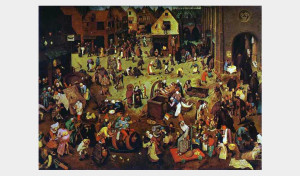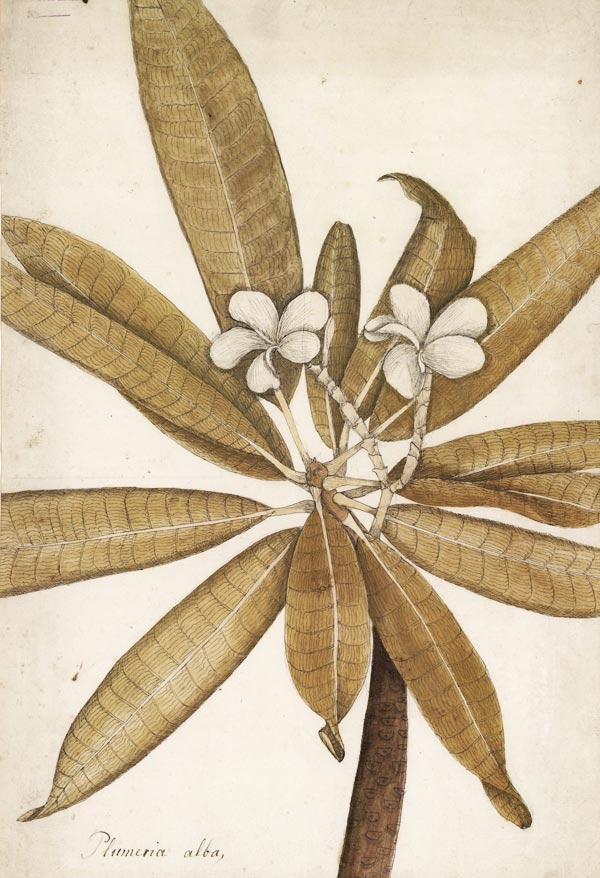Most often in restitution battles the disagreement boils down to whether a painting was looted, and/or whether it changed hands under circumstances that failed to pass clear title to the predecessor of its current possessor. Then, controversy frequently ensues about the extent to which the possessor resists restitution on grounds other than the title of the painting (jurisdiction, statute of limitations, etc.). Rarer is the type of dispute where the parties don’t even agree about what they’re disagreeing about, like the one brewing between Austria and Poland over a painting by Pieter Bruegel the Elder that hangs in the Kunsthistorisches Museum (KHM) in Vienna, The Fight Between Carnival and Lent (1559).
Bruegel Painting In Vienna Spurs Argument Over Allegations of Nazi Looting in Poland
Topics: Musée des Beaux Arts, Brussels, Krakow, Nazi-looted art, Diana Blonska, Gauleiter, Otto Gustav von Wächter, Feliks Kopera, Charlotte Wächter (née Bleckmann), Restitution, Kampf gegen Fasching und Fasten, Frau Wächter, Pieter Bruegel the Elder, Kunsthistorisches Museum, Poland, Austria, Museums, Vienna, The Battle Between Carnival and Lent
Vienna Natural History Museum Restitutes Botanical Drawings to Nazi Victims' Heirs, Acknowledges the Too-Often-Ignored Reality of Persecution and Coerced Sales
Vienna’s Natural History Museum (Naturhistorisches Museum) has restituted 177 botanical drawings and prints to the heirs of Dr. Ernst Moritz Kronfeld. The restitution, while somewhat delayed following a 2011 recommendation by Austria’s Advisory Council under the country’s Law for the Restitution of Artworks from the Austrian National Museums (Bundesgesetz über die Rückgabe von Kunstgegenstände aus den Österreichischen Bundesmuseen), highlights the increasing sophistication of that Advisory Council, particularly compared to recent steps backward by the Limbach Commission in Germany. Austria, once a lightening rod for criticism about confronting wartime and Nazi provenance issues, returned these drawings because of the clear problems with trying to portray any 1941 conveyance by a Viennese Jew as an arms’ length transaction—even without direct evidence of coercion. Just as importantly, it brushed away the defense that the drawings had been acquired in good faith as an excuse to continued possession, a dramatic change from the perspective usually taken by civil law countries.
Topics: Theresienstadt, Lvov, Nationalbibliothek, Galicia, Law for the Restitution of Artworks from the Austr, Germany, Nuremberg, Nazi Victims, Treblinka, Dr. Rudolf Engel, Naturhistorisches Museum, Henry David Thoreau, Hermann Goring, Hitler Youth, Mario Lanzer, Gauleiter, Dr. Ernst Moritz Kronfeld, National Library, Portrait of Amalie Zuckerkandl, Bundesgesetz über die Rückgabe von Kunstgegenständ, Restitution, Clara Levy, Hapsburg, Luxembourg, Vienna Natural History Museum, Ryk van der Schot, Empress Maria Theresia, World War II, The Three Graces, Franz Stefan von Lothringen, Lemberg, Ukraine, Nikolaus Joseph von Jacquinn, Rosalia Kronfeld, Austro-Hungarian empire, Drei Grazien, Lovis Corinth, Museums, Israeli Cultural Society, Austria’s Advisory Council, Gustav Klimt, Schönbrunn, Vienna, Anschluss, Welfenschatz, Baldur von Schirach, Limbach Commission




